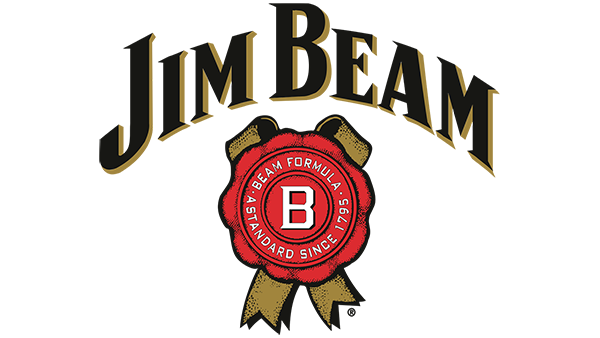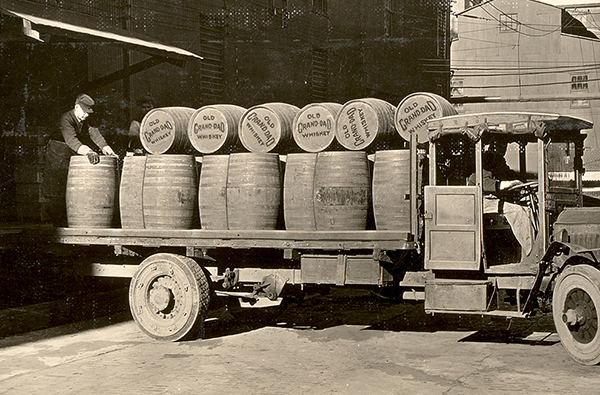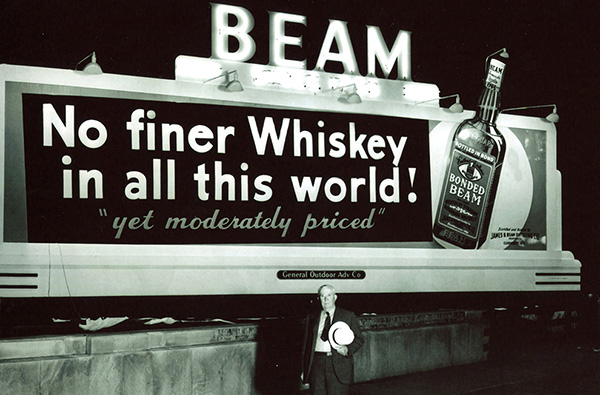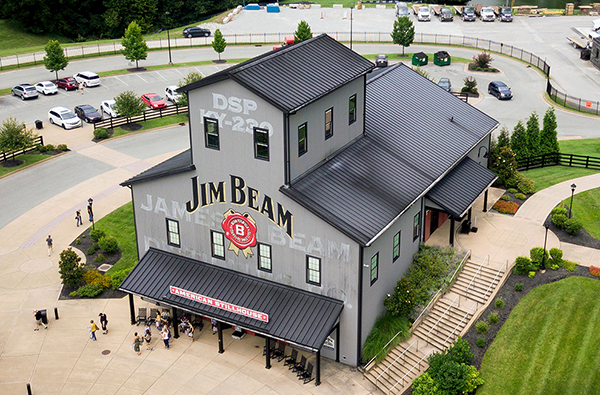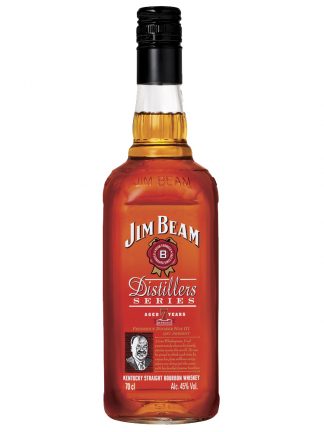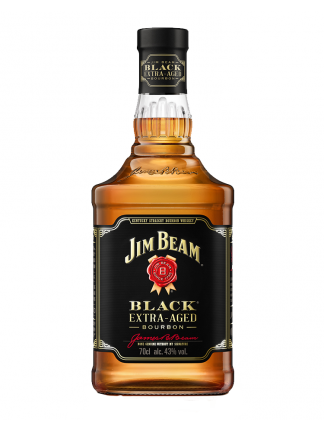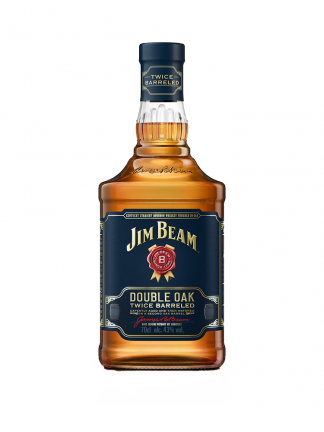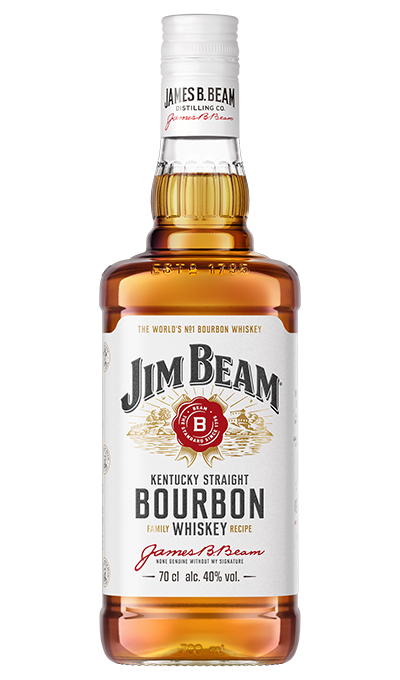Good bourbon comes with experience. Ours is 225 years old ...
Jim Beam and the beginning of his 225-year history
In 1740, when the United States was still the Thirteen Colonies, the Böhm family arrived in America determined to live the colonial dream. 48 years later, they moved to what is now central Kentucky and Americanized their German name to Beam. Warm summers, mild winters and calcareous springs make their new home ideal for "guessing correctly" about growing corn. Wasn't that what you were thinking? Well, don't worry, the bourbon story is coming soon.
By the end of the 18th century, in Western Pennsylvania, German, Scottish, and Irish settlers were already producing rye whiskey, according to recipes they brought with them from their native places. When the US government began offering incentives to relocate settlers and grow corn, many of them, along with their families, settled in Kentucky, Virginia (strange times, indeed). Among these farmers was Jacob Beam, who, like many others, used his father's whiskey recipe to distill excess corn into a new, sweeter type of whiskey. This is how bourbon was born and the foundations of Jim Beam were laid.

19th century
Perhaps the best decision Jacob Beam made was to sell his bourbon. He sold his first barrel of Old Jake Beam Sour Mash in 1795, exactly three years after Kentucky officially became a state. Its bourbon quickly became a favorite in the region - not a small achievement, given the fact that in the early 19th century Kentucky was home to approximately 2,000 distilleries.
In 1820, Jacob Beam handed over the distillery to his extremely astute son, David Beam. At that time, bourbon could only be distributed locally, so instead of bottling it and selling it in stores, as we do today, people brought their own containers to the distillery and filled them directly from the barrels. However, David foresaw the forthcoming change and decided to expand the distillery for future development and the transition from cauldrons to columns to ensure continuous production. He renamed the bourbon to "Old Tub" to match the name of the distillery.
During the Civil War, bourbon became so popular that even General Ulysses S. Grand became an ardent admirer of it. Because of the general's success, President Lincoln is said to have said the following words to him: "Find out what he drinks and send a cash register to the rest of my generals.
Our past is only half the story. The best is yet to come.
The dry regime in the early 20th century

Imagine working all your life to achieve a goal and suddenly being told that that goal is no longer legal. This is exactly what happened to Jim Beam, and within the 13-year "Dry Regime" he was forced to give up the cause of his life. This period marks the only time in our 220-year history in which our family has not distilled bourbon. Needless to say, there isn't much of bourbon's history to remember from those times, but Jim Beam is far from surrendering. To support his family, he turned to coal mining and citrus growing. Fortunately, he was not very good at either. Still, something good happened to the Beam family in those days when Jim's daughter, Margaret, married Frederick Booker Nou. Their son, Frederick Booker Nou II, would become a Master Distiller, continuing the Beam family tradition. When the Dry Regime finally fell in 1933, Jim Beam did not celebrate. Instead, at the age of 70, he stepped firmly on the pedal. With the help of family and friends, Jim Beam rebuilt his distillery in Clermont, Kentucky, in just 120 days. But even then, he refused to celebrate because he wanted his first drink in 13 years to be his bourbon. In 1935, the first batch of post-regime bourbon was ready. But Jim Beam no longer owned the rights to the Old Tub name, so he sold his first new bottle of Bourbon to Colonel James B. Beam. Finally, the man known today as "Colonel and Legend" could celebrate.
The revival of bourbon in the middle and end of the 20th century

Knowing that it depended entirely on the distinctive taste of his bourbon, he brought home a jug of his own yeast at home every weekend, just in case. To this day, we still use the same strain of yeast, and Jim Beam's great-grandson continues to take a sample of it with him every weekend at home. Because of all that Colonel James B. Beam had achieved in his time, in 1935 his son T. Jeremiah re-founded the distillery under the name Jim B. Beam Distilling Company and named our bourbon Jim Beam®, in honor of his father. . Jeremiah Jere Beam has been helping his father run the family business since the new distillery opened. And in 1946, shortly after the end of World War II, he officially took over. Like Jim Beam, bourbon generally began to grow from where it should have stopped before the Dry Regime. In 1938, mint julep was introduced as the traditional drink of the Kentucky Derby, which further ignited the fire. In the same year, the Jim Beam distillery launched its second product - Jim Beam® Rye - a drier and spicier version of the sweet bourbon Jim Beam. In 1954, the Jim B. Beam Distilling Company opened a second distillery 10 miles away in Boston, Kentucky, to meet the growing demand for bourbon. And in 1964, Bourbon's rise to fame reached its peak when President Lyndon B. Johnson declared it the "National Alcohol of America."
The bourbon renaissance in the early 21st century

In 1992, Booker was succeeded by his son and current chief technologist, Frederick Booker No III. Fred Noah became the seventh generation chief technologist of the Beam family, and in 2005, he filled the ten million barrel with Jim Beam. But Fred would do much more than fill a record number of barrels. Like his father, he had a flair for innovation and in 2009 launched Red Stag by Jim Beam. This black cherry liqueur, infused with Jim Beam Kentucky Straight Bourbon Whiskey, surprised the world of bourbon. With this, it opened the door wide to new possibilities inspired by bourbon. Building on the success of Red Stag, in 2011 Fred launched Jim Beam® Devil's Cut® - a more saturated bourbon made from the liquid that is absorbed into the wood during of aging. As if to encourage even more, Jim Beam Devil's Cut® and Jim Beam Black® won gold medals at the 2012 World Spirits Competition in San Francisco. Subsequently, Fred created a series of new limited series. In 2013, Fred Noah launched Jim Beam® Signature Craft and Jim Beam® Distiller's Masterpiece - a reissue of bourbon from a small batch and his father's best achievement. In 2015, he introduced Jim Beam® Apple, which would soon become the best-selling whiskey with added flavor in the world. Finally, in 2016, Fred brought innovation to the world of bourbon once again, with the launch of Jim Beam® Double Oak - bourbon matured again in a new charred oak barrel. Needless to say, Fred is pretty busy. But he did not finish his work and to this day, he continues to assert the place of Jim Beam in history, both as a pioneer and a classic.
Since its inception in 1795, every Master Distiller has found an opportunity to contribute to our history, looking for undiscovered ways to innovate in creation and enjoy bourbon. It is a real pleasure to look back on what the Jim Beam family has achieved and we know that we are what we are now, thanks to our constant desire to move forward. We certainly wouldn't be here if it weren't for all the members of our global family. Our 225th anniversary is a time to celebrate what we have been and look back to the coming 225 years, along with our growing Jim Beam family. Let's just say we have plans for the future.
